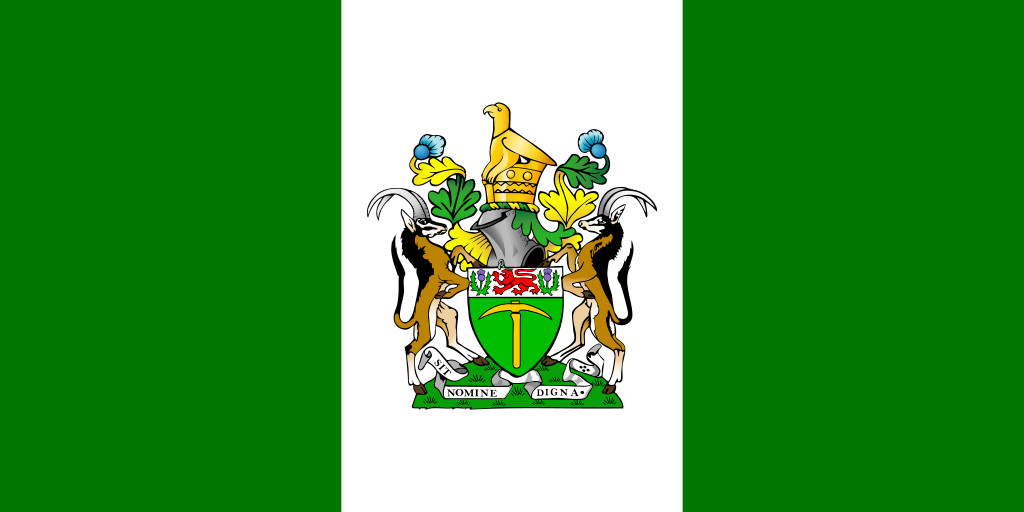Presumably, you heard about the lunatic from Florida who walked into a Dollar General store last weekend and shot and killed three black people for no other reason than they were black. He had something in common with the lunatic from South Carolina who walked into a black church in 2015 and killed nine parishioners during Bible study. They both had Rhodesia-related schwag.
The white gunman who killed three Black people at a Dollar General store in Jacksonville, Florida, over the weekend wore a Rhodesian army patch on his tactical vest…The patch — representing Rhodesia, a former white minority-ruled territory in southern Africa in the 1960s and ’70s that would become Zimbabwe — is yet another symbol of how the shooter, Ryan Palmeter, was racist and was influenced by racist ideology, investigators say.
…An admitted white supremacist who was convicted in the 2015 shooting of nine worshippers at a historically Black church in Charleston, South Carolina, appeared in an online image wearing a jacket with two patches: the green-and-white flag of Rhodesia and the flag of apartheid-era South Africa.
You can be forgiven for not knowing where Rhodesia is since it ceased to exist in 1980. It’s now called Zimbabwe. I was poking around and came across a declassified CIA report from approximately 1970, maybe 1971, on all the fun stuff that was going on in Rhodesia at that time. If you’re curious, it’s a good primer even if it doesn’t know how things turned out.
Because I was born in 1969, the Rhodesia issue wasn’t much on my radar as a kid. Whether it was Peter Gabriel’s song about Steve Biko or the student movement at Princeton University for divestiture in South Africa (which I believe involved Michelle Obama, nee Robinson), I definitely knew about apartheid and the Reagan administration’s cuddly relationship with the racist government in Pretoria and Cape Town. It was only in college that I became familiar with the broader story of decolonization in Africa, and the particularly painful example of Rhodesia.
The short story is that a bunch of Brits led by Cecil Rhodes (of Rhodes Scholar fame) arrived there in the 1890’s in search of gold. They used machine guns to subdue the native tribes and though they never found too much gold, they prospered in agriculture and mining. As a British colonial possession, the state was well organized with modern banking options and underwent rapid development, but the whites were outnumbered more than 20 to 1, and they naturally plucked up the most arable land and took control of the valuable minerals.
As the decolonization movement got going after World War Two, the white Rhodesians felt particularly threatened and they resisted making concessions. They stepped up repressive and extralegal measures, and ultimately they split with Queen Elizabeth II in 1965 and tried to go their own way as an independent nation. United Nations condemnation and economic sanctions followed, and in the United States their best friends were pro-Jim Crow southerners opposed to the black Civil Rights Movement. Jeet Here wrote about this in The New Republic back in 2015, with reference to the Charleston shooter.
Dylann Roof is not an original thinker. Based on a manifesto on the lastrhodesian.com, apparently written by the alleged Charleston killer, Roof has a shallow mind that credulously absorbed whatever he read on racist websites. But one particular strand of his thinking has roots beyond white supremacy proper, in mainstream conservatism: Roof repeatedly links his racial separatism with support for colonial regimes that once ruled large swaths of Africa. In one photo, he’s shown wearing patches bearing the flags of apartheid South Africa and white-ruled Rhodesia. The manifesto upholds apartheid as a model for how a minority of whites could dominate a black majority: “Look at South Africa, and how such a small minority held the black in apartheid for years and years.”
The idea that whites in America have a natural affinity with white colonialists in Africa did not spring from the neo-Nazi far-right, but rather the conservative movement that coalesced around National Review in the 1950s. If Roof saw himself as “the last Rhodesian,” then the magazine’s conservatives of were the first American Rhodesians.
It’s true, the intellectual creators of the National Review, William Buckley and James Burnham, were very close to the white colonialist governments in South Africa and Rhodesia, and for many of the same reasons cited by Dylann Roof.
It’s not clear that holding these beliefs in some way justifies murdering black strangers without any semblance of provocation. That requires a mental leap and moral lapse that Buckley and Burnham didn’t make. But it shows both that these racial killers aren’t far removed from influential conservative thought on race and the danger of that kind of thought when it gets the blessing of intellectuals.
So, Rhodesia succumbed the the independence movement in 1980, but the idea behind it lives on. You might have never known or simply forgotten about the country, but white nationalist conservatives know about it and they celebrate with patches on their tactical gear.



